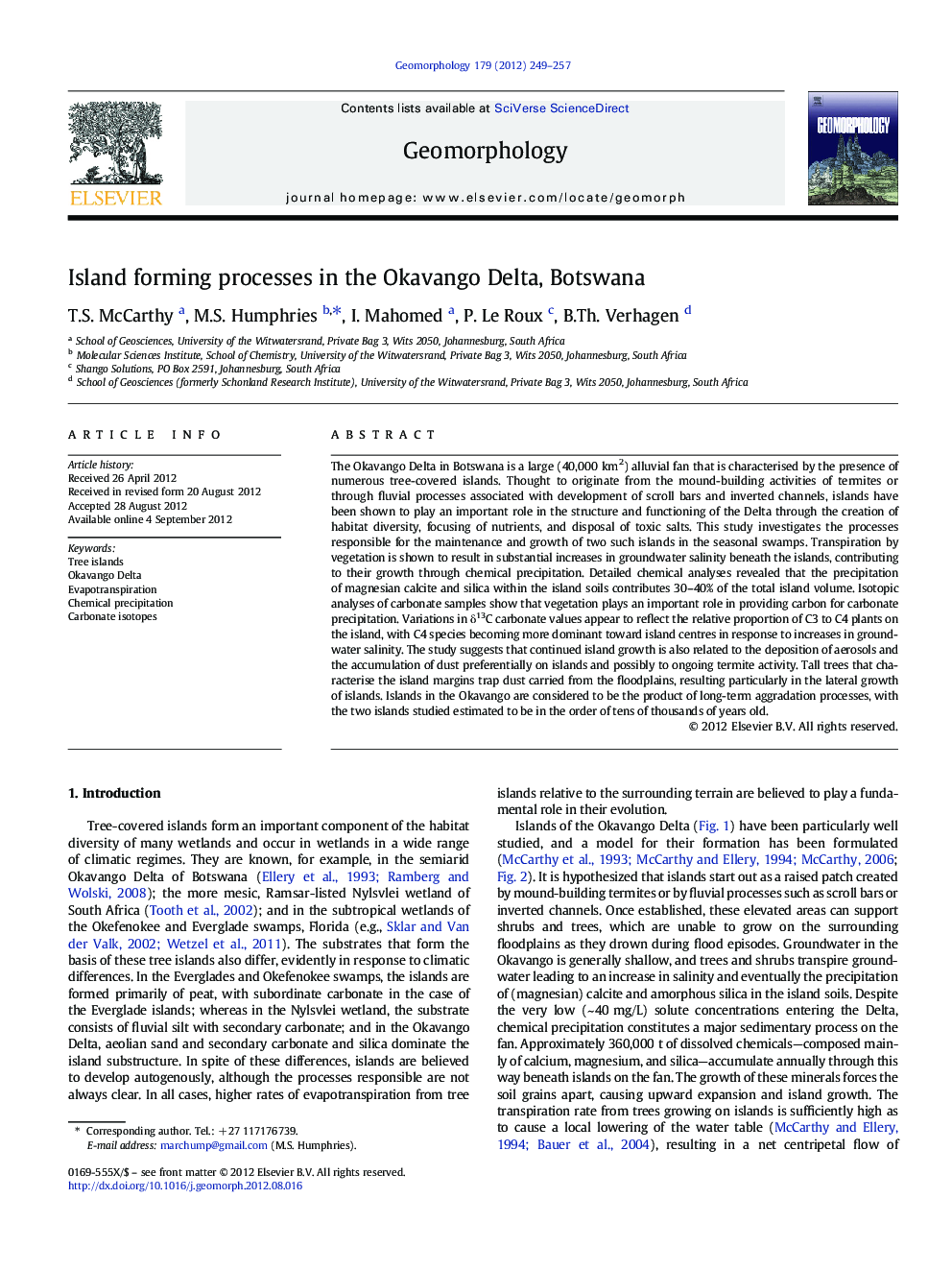| کد مقاله | کد نشریه | سال انتشار | مقاله انگلیسی | نسخه تمام متن |
|---|---|---|---|---|
| 4685067 | 1635469 | 2012 | 9 صفحه PDF | دانلود رایگان |

The Okavango Delta in Botswana is a large (40,000 km2) alluvial fan that is characterised by the presence of numerous tree-covered islands. Thought to originate from the mound-building activities of termites or through fluvial processes associated with development of scroll bars and inverted channels, islands have been shown to play an important role in the structure and functioning of the Delta through the creation of habitat diversity, focusing of nutrients, and disposal of toxic salts. This study investigates the processes responsible for the maintenance and growth of two such islands in the seasonal swamps. Transpiration by vegetation is shown to result in substantial increases in groundwater salinity beneath the islands, contributing to their growth through chemical precipitation. Detailed chemical analyses revealed that the precipitation of magnesian calcite and silica within the island soils contributes 30–40% of the total island volume. Isotopic analyses of carbonate samples show that vegetation plays an important role in providing carbon for carbonate precipitation. Variations in δ13C carbonate values appear to reflect the relative proportion of C3 to C4 plants on the island, with C4 species becoming more dominant toward island centres in response to increases in groundwater salinity. The study suggests that continued island growth is also related to the deposition of aerosols and the accumulation of dust preferentially on islands and possibly to ongoing termite activity. Tall trees that characterise the island margins trap dust carried from the floodplains, resulting particularly in the lateral growth of islands. Islands in the Okavango are considered to be the product of long-term aggradation processes, with the two islands studied estimated to be in the order of tens of thousands of years old.
► We examine the processes responsible for tree island growth in the Okavango Delta.
► Chemical precipitation and dust accumulation are identified as the key contributors.
► Islands are estimated to be in the order of tens of thousands of years old.
Journal: Geomorphology - Volume 179, 15 December 2012, Pages 249–257